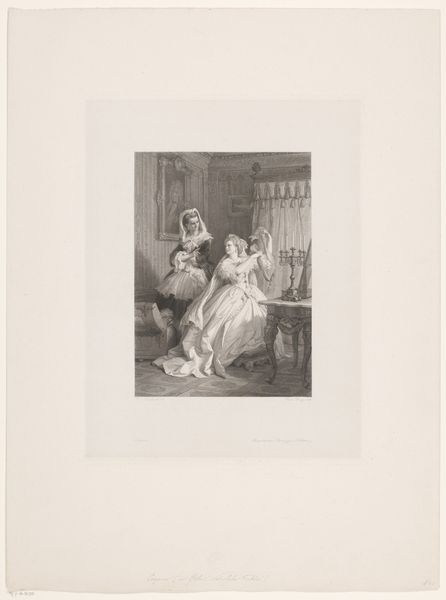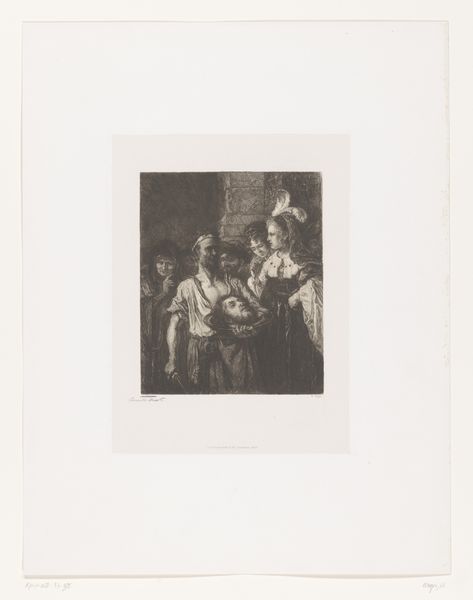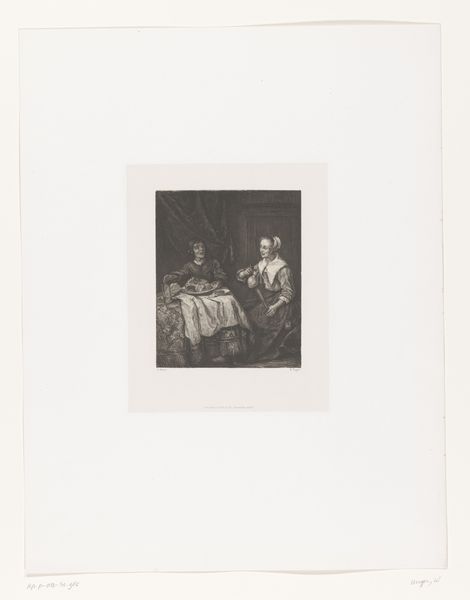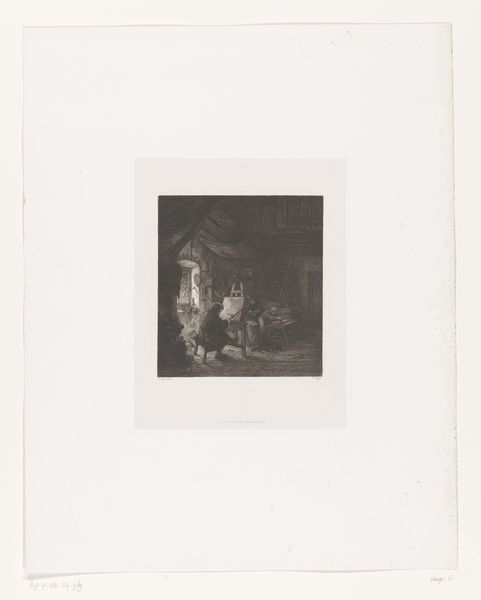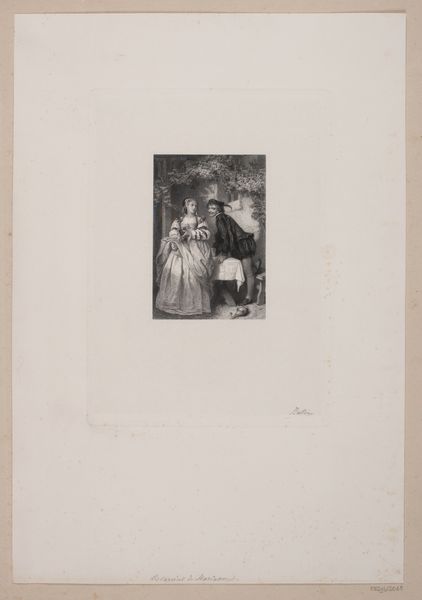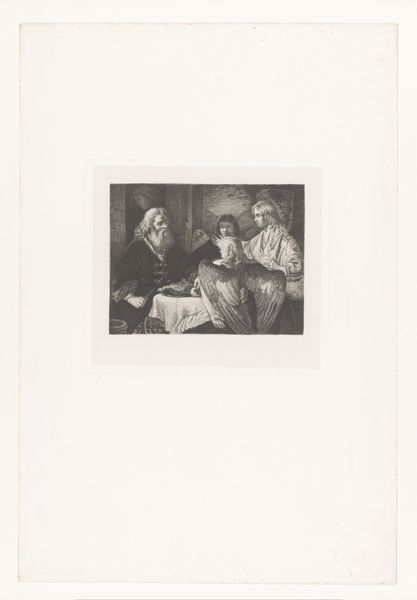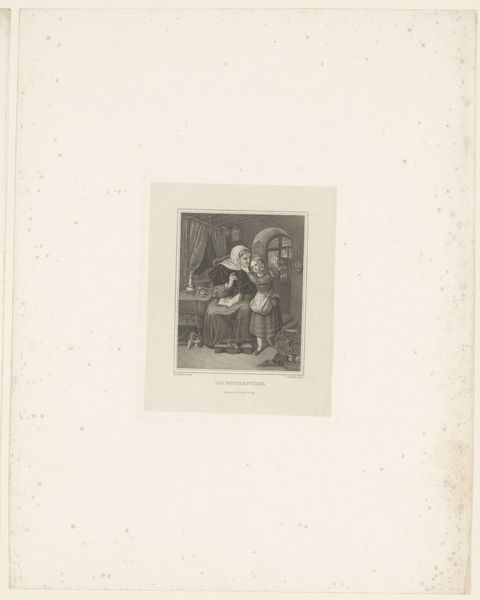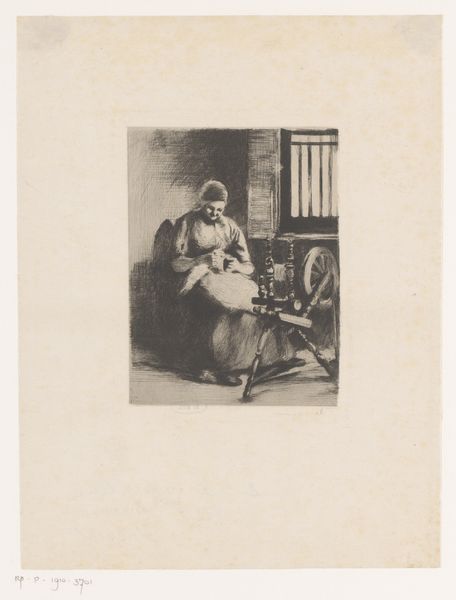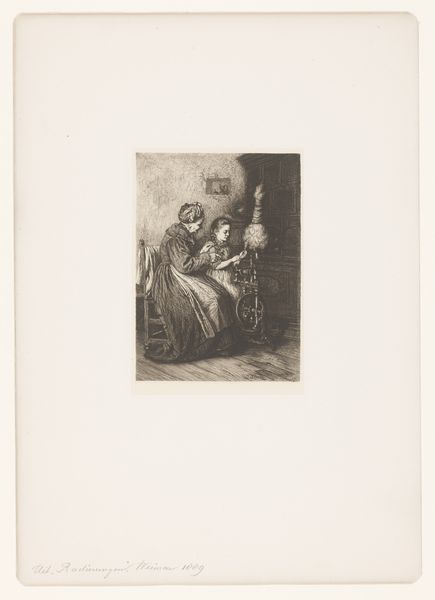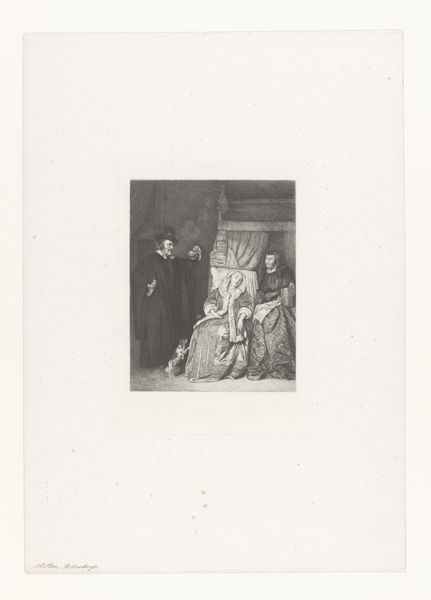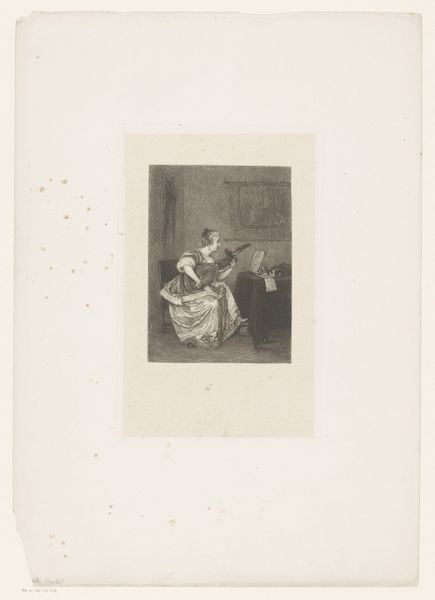
print, engraving
#
portrait
#
mother
# print
#
genre-painting
#
engraving
#
realism
Dimensions: height 215 mm, width 158 mm
Copyright: Rijks Museum: Open Domain
Curator: What strikes me immediately is the tenderness in this engraving by Henri Emile Lefort, created sometime between 1862 and 1880. It’s called “Moeder met kinderen en spiegel,” or "Mother with children and mirror". The soft light and shadows create a real sense of intimacy. Editor: Yes, but let's think about how that intimacy is constructed, literally etched onto the plate, transferred through a press. This isn't some fleeting watercolor, it is reproductive, destined for wide distribution. We're seeing a commodified sentiment here. How was this image sold and to whom? That’s what I want to know. Curator: You’re right, the medium speaks to accessibility, but the subject matter—a mother gazing lovingly at her children in a domestic setting – it also resonates universally. The mirror adds another layer, almost inviting the viewer to reflect on their own family relationships, or perhaps societal expectations around motherhood at the time. What do you make of the mirror, apart from its material properties of glass and reflective metals, of course? Editor: Well, consider the craft involved. The choice to render a reflection of a child *within* the mirror is key. Is Lefort commenting on the perceived authenticity of printed images by doubling the representation? He is presenting two forms of production that give you access to the sitters: the child in the room with the mother, and that child mediated. Curator: And what about the role of labor here, with Lefort carefully manipulating the etching tools to capture those subtle expressions? It makes me think about all those mothers through history, working away largely unseen, yet deeply connected with their loved ones. Do you feel like it successfully evokes the spirit of realism? Editor: I can't argue with you there. There’s something very down to earth here, yes. Maybe it reflects the growth of illustrated journals in the era or a change in expectations of women at home. We could certainly explore Lefort's sources more, whether through prints, photographs, and beyond. I do wonder, who exactly was he portraying? Was this simply aspirational or representative? Curator: It’s funny how a simple scene can become such a puzzle, and that perhaps it has answers that keep unfolding! It has been a pleasure to join this piece with you! Editor: Indeed! There are a plethora of possibilities in such works, when considering a different perspective.
Comments
No comments
Be the first to comment and join the conversation on the ultimate creative platform.
